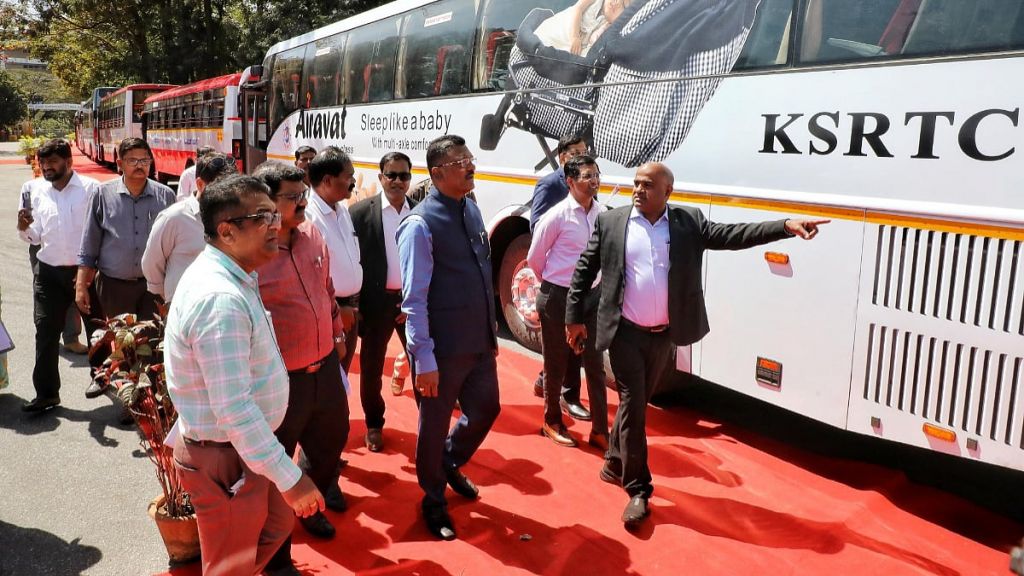
Mumbai: In a bid to enhance the quality of Maharashtra State Road Transport Corporation (MSRTC) services, the state government is considering to adopt best practices from the Karnataka State Road Transport Corporation (KSRTC).
Maharashtra Transport Minister Pratap Sarnaik, during his visit to Bengaluru, lauded KSRTC’s efficient transport management system and proposed similar improvements for Maharashtra’s iconic ‘Lal Pari’ bus services.
"The move aims to modernize MSRTC’s fleet, improve passenger facilities, and boost service efficiency across the state. Minister Sarnaik’s two-day study tour on February 1 and 2 was part of a broader initiative to integrate successful transport models from other states," said an official.
During his visit, Minister Sarnaik was accompanied by Karnataka Transport Minister Dr. Ramalinga Reddy, Karnataka Transport Secretary Dr. N.V. Prasad, and KSRTC Vice Chairman Rizwan Nawab. Senior MSRTC officials, including Vice Chairman and Managing Director Dr. Madhav Kusekar, General Manager (Transport) Nitin Maid, and General Manager (Mechanical) Nandkumar Kolarkar, were also part of the delegation.
According to sources, the study focused on KSRTC’s premium bus services, operational strategies, and passenger-friendly initiatives. Minister Sarnaik personally inspected Airavat, Ambaari, and Rajhans—KSRTC’s long-distance luxury buses known for their safety, punctuality, and reliability.
“KSRTC’s buses are widely recognized for their high service standards, providing passengers with a comfortable and safe travel experience. Compared to private operators, these government-run services stand out in terms of reliability and efficiency,” Sarnaik said.
According to an official, the Karnataka State Road Transport Corporation's features—such as Wi-Fi and onboard urinals for long-distance travel, e-ticketing and online booking services for seamless reservations, a zonal management system where four regional transport zones are overseen by IAS officers to improve efficiency, and employee incentive programs to motivate staff and enhance service delivery—could be integrated into MSRTC in the near future.
KSRTC officials showcased a diverse fleet of buses, ranging from 9 -meter to 15-meter models, designed for hilly terrains and express highways. The buses come with different engine capacities, seating configurations, and modern passenger amenities.
Minister Sarnaik acknowledged Prime Minister Narendra Modi’s call for public representatives to study successful models across India and emphasized that Maharashtra is keen to implement innovative strategies.
“My visit to Karnataka was aimed at understanding KSRTC’s successful practices, especially in long-distance premium bus services, employee welfare schemes, and operational efficiency. We will explore how these can be adapted to improve MSRTC,” he said.